If you’re a guitarist, you’ve probably used (or at least come across) a number of pedals. But effects pedals aren’t just used for guitars. They’re often used with other instruments. Guitar pedals are often built to work well with guitars, but they can be used with other instruments. Other more general effects pedals may be useful across a number of different instruments or be made for specific instruments. For example, I have a friend who has an effects pedal build specifically for harmonicas.
However you look at it, you’ve probably wondered exactly how the pedal you’re using actually works. You may be happy to treat it as a mysterious black box that just “does stuff,” but you may want to know a little bit more.
Although this question is a bit broad, I’m going to do my best to explain how guitar pedals work. There will be some technical descriptions in here, but also general enough information for people who just want to understand what’s happening when they turn on their pedal. If all of this starts to get you interested, I also have my beginners guide to making your own guitar pedals. From there, this site is always growing, with plenty of resources that explain how effects pedals work and how to make them.
Guitar Pedal Circuits And How They Work
 To put it as basically as possible, inside a guitar pedal is an electronic circuit that’s design to do something to the signal that’s being put through the pedal. When we’re talking about guitar pedals, that signal is the the guitar signal.
To put it as basically as possible, inside a guitar pedal is an electronic circuit that’s design to do something to the signal that’s being put through the pedal. When we’re talking about guitar pedals, that signal is the the guitar signal.
Guitar pedals (and amps) can be thrown into two broad classifications: analogue and digital. Personally, I’m more interested in analogue pedals, and really find them a lot more interesting, but I also have to admit that digital pedals open players up to a lot of interesting sounds and can be made to simulate many more sounds like you can do through analogue.
How Digital Guitar Pedals Work
I’m not going to spend that much time on digital pedals. I’m less interested in them and can really be treated as the black box I mentioned before.
The signal from an electric guitar is an analogue signal. With a digital pedal, this signal is converted into a digital signal and then processed by a computer chip. Then, however the computer chip is programmed is what happens with the signal and what the effect sounds like.
Personally, I don’t think there’s much more to say about how a digital effects pedal works. To explain that I’d have to explain exactly how computers work. For one thing, I don’t think I know enough about computers to explain how they work. And for another thing, that would take to long. So let’s look at analogue guitar pedals.
How Analogue Guitar Pedals Work
Analogue guitar pedals don’t convert the signal into a digital signal and then simulate a sound. Instead, and analogue pedal uses various components such as resistors, capacitors, transistors, diodes, and integrated circuits to manipulate the analogue signal and create something different; some even use vacuum tubes as well. It’s amazing what can be done with these components to drastically change the sound. As mentioned, these aren’t computer chips; there’s nothing “smart” about these components or how the circuit works. It’s just pure electronics.
If you take a look at my guides to guitar pedal components, you can learn more about what everything does, but to put it all briefly, a guitar pedal circuit is made up of:
- Resistors: resistors are used to modify signal strength in guitar pedals. Used in conjunction with other components (especially transistors and integrated circuits), the signal can be bigger or smaller, or it can accentuate a particular effect that’s being made.
- Capacitors: capacitors have a lot of uses in guitar pedals. They’re often used to regulate power supply and also for tone control in guitar pedals.
- Diodes: diodes are usually used to regulate power flow and avoid reverse polarity problems. In guitar pedals, they’re usually used to clip signals, giving distorted and overdrive sounds. If you want to know more about how diodes are used to create overdrive and distortion, you can read my article on the difference between overdrive and distortion.
- Transistors: transistors are usually used to boost the signal in a guitar pedal. This can make the signal sound louder or it can add fuzz and other distorted effects. The type of transistor being used as well as how it’s set up to interact with the other components will effect exactly what it sounds like.
- Integrated Circuits: integrated circuits included operational amplifiers and other circuits that have components in them to create the desired effect. Like digital effects, some integrated circuits can be treated a little bit like a black box, and the topic is too deep to go into here.
- Potentiometers: potentiometers are just variable resistors. So, like resistors, they’re used to regulate signal strength, either making the signal higher or lower.
The above is an extremely short explanation of what common components do in guitar pedals. These all work together to create a circuit and create the specific sound the guitar pedal is designed to make.
Below I’ll outline some typical effects that are created with guitar pedals, and briefly outline how the above components contribute to that sound.
Types Of Guitar Pedal Effects
If you’ve played guitar for even a short amount of time, you’ve probably heard of some of these types of effects. As I already mentioned, a digital pedal will just use a computer chip to simulate these sounds, and there’s not much explanation to put there. Instead, I’ll be explaining these from the perspective of analogue effects pedals.
Gain And Distortion Related Guitar Pedals
When talking about pedals, there’s a difference between distortion, overdrive, and fuzz, but for the take of this discussion, I’m talking about distortion as it relates to a dirty sound (so distortion, overdrive, and fuzz). There are two main ways of creating a distorted signal, and it all has to do with clipping the sound so it no longer sounds clean:
- Diode clipping: here the signal is boosted using either an operational amplifier or a transistor and then it’s passed through diodes. The diodes clip the signal and make it distorted.
- Transistor clipping: here the signal is boosted past a transistor’s saturation point, causing it to distort.
Boost pedals also exist, and they’re just designed to add volume (and maybe include some tone control). Boost pedals usually use transistors or operational amplifiers to boost a signal, but without clipping.
EQ Pedals
EQ pedals create a filter to adjust the tone of the signal, either filtering or accentuating bass or treble signals. These often use standard RC filters to get the desired tone and can use the same ideas in boost pedals to push that signal further.
These pedals can also include things like a Wah, which is really just an over the top tone control.
Time Based Pedals
Here we’re talking about things like delay and reverb. A lot of modern delay and reverb pedals are digital, but it’s also possible to make the same effects with integrated circuits.
With that in mind, any time based pedals may also have some sort of tone, gain, or volume control. Again, these elements in a time based pedal use the same principles discussed above.
Modulations And Dynamics
I’m putting these together because they’re broad and also a bit more complex. Here we’re talking about effects like compression for dynamics, and a tremolo for modulation. The types of pedals here are so broad, there are a lot of ways that they’re done.
I Hope You Learned Something
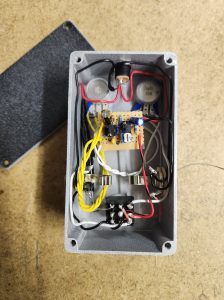 Here I’ve tried to cover a pretty broad topic relatively concisely. My intention here is to give enough information to explain how guitar pedals work while also avoiding going into so much detail that this article isn’t the length of a textbook.
Here I’ve tried to cover a pretty broad topic relatively concisely. My intention here is to give enough information to explain how guitar pedals work while also avoiding going into so much detail that this article isn’t the length of a textbook.
But, if this article has explained enough to make you interested, there are tons of resources on this website and other places. I’ve linked to articles that have more depth as appropriate so that you can learn more and expand your knowledge.
Have fun.
Related posts:
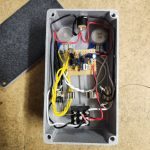 How To Wire Guitar Pedal Enclosures
How To Wire Guitar Pedal Enclosures
 What’s The Difference Between Overdrive, Distortion, And Fuzz?
What’s The Difference Between Overdrive, Distortion, And Fuzz?
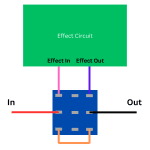 What Is True Bypass In Guitar Pedals?
What Is True Bypass In Guitar Pedals?
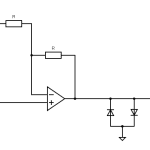 How To Use A Distortion Or Overdrive Pedal
How To Use A Distortion Or Overdrive Pedal
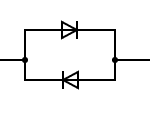 What’s The Difference Between Symmetrical And Asymmetrical Clipping?
What’s The Difference Between Symmetrical And Asymmetrical Clipping?
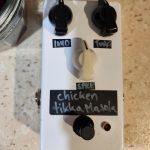 Is It Expensive To Make Your Own Guitar Pedals?
Is It Expensive To Make Your Own Guitar Pedals?
 How Do Guitar Pedal (And Guitar) Volume Knobs Work?
How Do Guitar Pedal (And Guitar) Volume Knobs Work?
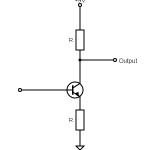 What Is Gain (And How It’s Different From Volume)
What Is Gain (And How It’s Different From Volume)
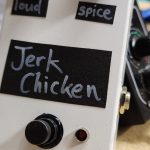 What Do Guitar Pedals Do?
What Do Guitar Pedals Do?
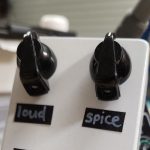 How Does A Drive, Gain, Or Distortion Knob Work?
How Does A Drive, Gain, Or Distortion Knob Work?

